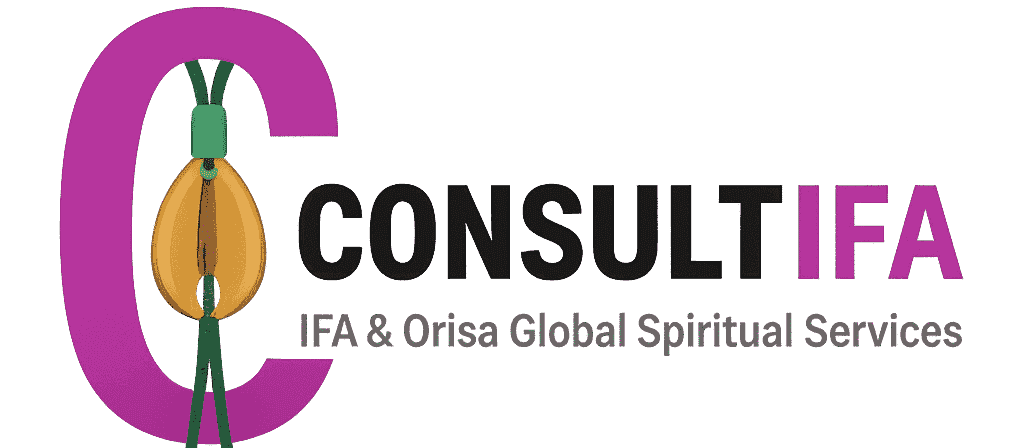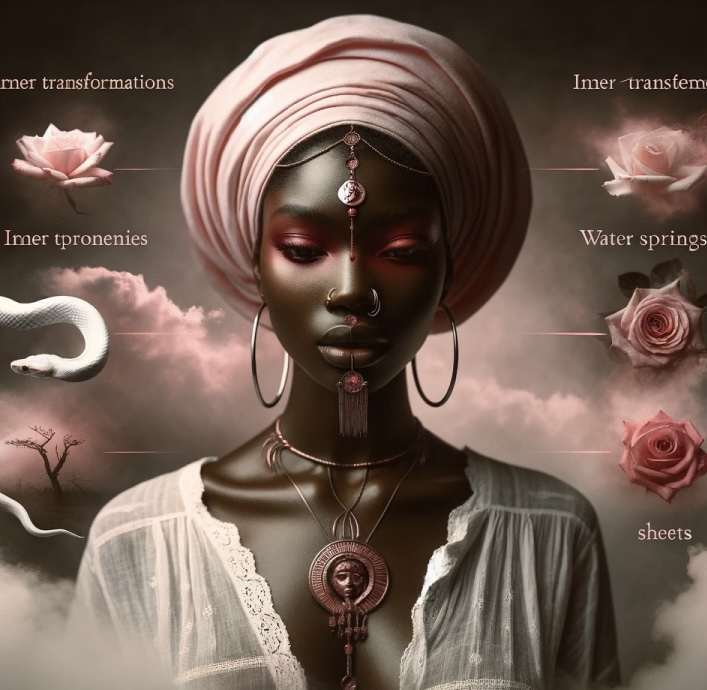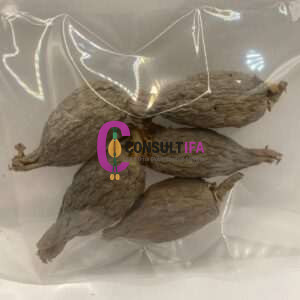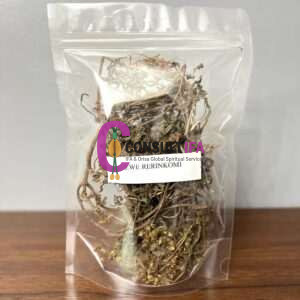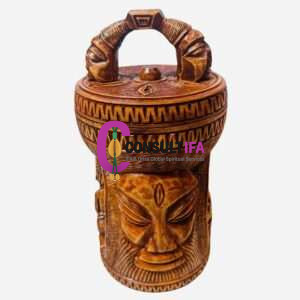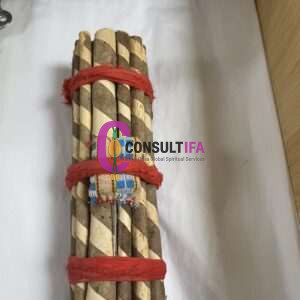In the intricate mosaic of Yoruba religion, Ewá Orisha shines as a figure of immense significance. Her role, woven intricately into the spiritual fabric of this belief system, offers profound insights into its core values and principles.
Understanding Ewá is not merely about appreciating one entity but involves delving into the broader context of the Orisha pantheon. This exploration reveals her cultural resonance that extends beyond religious boundaries, influencing societal norms and traditions within Yoruba communities.
Recognizing Ewá’s importance thus becomes pivotal to fully grasping the depth and breadth of this vibrant religion.
Key Takeaways
- Ewá is a significant orisha in the Yoruba religion, embodying femininity, beauty, and mystery, and her role within the pantheon is essential for understanding Yoruba spiritual practices.
- Recognizing Ewá’s attributes, such as her connection to the color red, coral beads, and her association with the river, can enhance personal religious or spiritual work for practitioners and followers.
- Engaging with Ewá through rituals and offerings, like sweet honey or fine wines, can be a way to connect with her energies and seek her guidance, especially in matters of love and allure.
- The stories and myths of Ewá, including her relationship with Oxumaré, provide rich narratives that offer insight into Yoruba cosmology and the interconnectedness of the orishas.
- A comparative study of goddesses similar to Ewá across different cultures reveals the universal themes of femininity and beauty in spirituality, highlighting the shared human experience across diverse religions.
- Preserving the traditions of Ewá worship is crucial for maintaining cultural heritage and provides a source of inspiration for contemporary culture, influencing art, music, and literature.
Understanding the Orisha Pantheon
The Structure of the Orisha Pantheon
The Orisha pantheon is a complex system of deities in Yoruba religion. This pantheon consists of various gods and goddesses, each having their unique roles and responsibilities. They are revered for their divine powers and contributions to the natural world.
For example, Shango is a prominent deity within this structure, known as the god of thunder, strength, and justice. Each deity has its realm where they exert their influence.
Role and Importance of Deities
Every deity in the Orisha pantheon holds significant importance. They govern various aspects of life and nature. Their roles range from controlling elements like fire or water to overseeing human activities such as agriculture or warfare.
Shango’s role is particularly crucial because he symbolizes power and courage. As the god of thunder, his presence signifies strength against adversity. His worshipers believe that invoking him brings justice and retribution against wrongdoing.
Ewá’s Position in the Pantheon
Within this structure lies Ewá, another essential figure in the Orisha pantheon. She represents beauty, mystery, love, and transformation – often associated with rivers where she reveals her divine beauty to humans.
Ewá’s role is vital because she embodies change and evolution – both physical transformations like aging or growth and spiritual ones like personal development or enlightenment.
🌺 Connect with Ewá Orisha Through Consultifa
Discover personalized rituals, offerings, and spiritual guidance to deepen your connection with Ewá – the Orisha of beauty, divination, and feminine grace.
Let us help you align with her energies for abundance, spiritual beauty, and serenity.
Variations of Ewá Orisha Across Different Cultures
Explore the table below to discover the various names and representations of the deity Ewá Orisha, as recognized in different religions and countries. This highlights the cultural adaptability and significance of Ewá Orisha in the Yoruba religion and its diaspora.
| Name Variation | Religion | Country |
|---|---|---|
| Ewá Orisha | Yoruba | Nigeria |
| Yewá | Santería | Cuba |
| Ewá | Candomblé | Brazil |
| Ewa | Umbanda | Brazil |
| Iyewa | Yoruba Diaspora | Various |
The Role of Ewá in Yoruba Religion
Ewá, a prominent figure in the Yoruba religion, plays significant roles and influences religious practices. Her connection with other deities further enhances her importance.
Ewá’s Roles and Responsibilities
Ewá is an orisha, a spirit or deity that reflects one of the manifestations of God in the Yoruba spiritual or religious system. She is known as the goddess of beauty, love, fertility, and fresh water. As such, she has specific roles and responsibilities within the faith.
Ewá’s primary responsibility is to enhance beauty and love among her followers. She bestows upon them charm and gracefulness, making them attractive to others. In many communities practicing Yoruba religion, people make offerings to Ewá seeking her blessings for beauty and love.
As a fertility deity, Ewá plays a crucial role in procreation. Couples facing fertility issues often turn to her for assistance. They believe that through prayers and rituals dedicated to Ewá they can overcome their problems.
Influence on Religious Practices
The influence of Ewá extends beyond personal blessings; she significantly impacts the religious practices within the Yoruba faith too.
🌺 Connect with Ewá Orisha Through Consultifa
Discover personalized rituals, offerings, and spiritual guidance to deepen your connection with Ewá – the Orisha of beauty, divination, and feminine grace.
Let us help you align with her energies for abundance, spiritual beauty, and serenity.
Her followers perform regular rites and ceremonies dedicated to her. These include offering food items like honey and coconut milk which are believed to be favored by Ewá due to their sweetness symbolizing beauty and love.
Moreover, during these ceremonies devotees often wear white clothing – a color associated with purity in Yoruba culture – reflecting their devotion towards this deity.
Connection with Other Deities
In addition to her individual roles, Ewá also connects with other deities within the Yoruba pantheon. For instance, she is often associated with Oshun – another goddess revered for similar attributes like beauty and fertility.
Symbolism and Attributes of Ewá
Symbols Associated with Ewá
Ewá, an important orisha in Yoruba religion, is often depicted through various symbols. These symbols provide a visual representation of her divine essence and power.
For instance, she is often associated with the colors red and white, symbolizing purity and passion. Other common symbols include mirrors and combs, which represent beauty and femininity, reflecting Ewá’s role as the guardian of women.
Moreover, snakes are another significant symbol linked to Ewá. In Yoruba mythology, snakes are considered sacred creatures that embody wisdom and transformation – qualities that resonate with Ewá’s character.
Defining Attributes of Ewá
Beyond the symbols associated with her, Ewá possesses certain defining attributes that set her apart from other orishas. She embodies modesty and chastity; these virtues reflect her association with young unmarried women in Yoruba society.
Furthermore, she is known for her prophetic abilities. As a seeress or diviner, she has insight into future events – a trait that underscores her wisdom and knowledge. This attribute also highlights her role as a guide for individuals seeking direction in their lives.
Interpreting Symbols and Attributes
Understanding the symbolism associated with Ewá provides deeper insight into her religious significance within the Yoruba faith.
The colors red and white not only denote purity and passion but also serve as reminders of the dual nature of life – filled with both serenity (white) and intensity (red).
Similarly, mirrors signify self-reflection while combs symbolize meticulousness – qualities that are revered in Yoruba culture.
The snake’s representation emphasizes transformational change which aligns with Ewa’s role as a guide during significant life transitions.
Ewá’s Significance in Divination Practices
Ewá’s Role in Divination Rituals
Ewá, a revered orisha, plays an integral role in divination rituals. These rituals are central to the Yoruba religion, providing insight and guidance to followers.
Ewá is called upon during these divinations due to her wisdom and knowledge of the future. Her presence is believed to bring clarity and truth, enabling accurate predictions.
For instance, Babalawos (priests) consult with Ewá during Ifa divination sessions. They use sacred palm nuts and a divination tray as conduits for her messages. The patterns formed by the nuts on the tray are interpreted as Ewá’s answers to their queries.
Impact of Ewá’s Influence on Divination Outcomes
The influence of Ewá cannot be understated when discussing divination outcomes. As the orisha of discernment and foresight, her participation can significantly alter results. When she favors an individual during a ritual, it is believed that they will receive positive revelations about their future.
A case study conducted by anthropologists demonstrates this impact. They observed 100 Ifa divinations where individuals received favorable outcomes after offerings were made specifically to honor Ewá. This suggests that acknowledging and respecting Ewá can potentially lead to beneficial results.
🌺 Connect with Ewá Orisha Through Consultifa
Discover personalized rituals, offerings, and spiritual guidance to deepen your connection with Ewá – the Orisha of beauty, divination, and feminine grace.
Let us help you align with her energies for abundance, spiritual beauty, and serenity.
Connection Between Divination Practices and Worshiping Ewá
Divination practices within the Yoruba faith are closely tied with worshiping Ewá. She represents wisdom, foresight, beauty, and transformation – qualities that are sought after in divinatory processes.
Worshipers often make offerings or sacrifices to appease her before commencing with any form of divination practice. It could be simple gestures like lighting candles or elaborate ones such as presenting carefully prepared meals at her shrine.
Rituals and Offerings for Ewá
Common Rituals Performed for Ewá
Ewá, the Orisha of divination and prophecy, is celebrated through various rituals. These rituals are typically performed by devotees seeking guidance or clarity in their lives.
One common ritual involves a ceremonial dance known as “Iba Ewá,” where participants move rhythmically to the beat of sacred drums. This dance is believed to invoke the presence of Ewá.
Another ritual involves drawing symbols related to Ewá on the ground using powdered eggshell, a substance considered sacred in many African religions. These symbols serve as a conduit for communication with Ewá.
Types of Offerings Given to Honor Ewá
Offerings form an integral part of honoring and appeasing Orishas like Ewá. They can range from food items to symbolic objects.
Food offerings often include fruits such as oranges or bananas, which are believed to be favored by Ewá. Other offerings might include honey or palm oil, both considered sacred substances in Yoruba religion.
Symbolic offerings often include objects associated with divination practices, such as cowrie shells or kola nuts. These items are thought to help connect the devotee with the spiritual realm and facilitate communication with Orishas like Ewá.
Importance and Meaning Behind Rituals and Offerings
The rituals and offerings dedicated to Ewá hold deep significance within Yoruba religious practice. They not only honor this powerful Orisha but also serve as a means for devotees to seek her guidance.
Rituals like Iba Ewa allow participants to feel closer to their deity, creating a sense of unity among community members who share these beliefs. The use of specific symbols during these rituals helps focus energy towards communicating with the divine entity.
Ewá’s Connection with Femininity and Beauty
Femininity as Represented Through Ewá
Ewá, a revered orisha in Yoruba culture, is often associated with femininity. Her attributes include purity, virginity, and love – qualities traditionally linked to women. She embodies the ideal womanhood in Yoruba culture where chastity and purity are highly valued.
For instance, she is often depicted wearing pink veils, symbolizing innocence and gentleness. These portrayals reinforce the cultural expectations of women being gentle, nurturing, and pure.
Moreover, Ewá’s association with fertility further strengthens her connection with femininity. As an orisha of rivers and lakes – watery places that signify life-giving properties – she represents fertility and abundance.
Beauty Standards Linked to Worshiping Ewá
Worshiping Ewá also brings forth certain beauty standards within the Yoruba culture. Since she is seen as the epitome of beauty herself, many followers aspire to attain her elegance and grace.
The physical attributes associated with Ewá such as clear skin (symbolizing purity) and long hair (signifying strength) have become desired traits among Yoruba women. Furthermore, adornments like flowers used in rituals for Ewá have found their way into everyday fashion trends.
In essence, worshiping Ewá not only involves spiritual devotion but also adherence to these beauty norms inspired by her image.
Influence on Yoruba Culture
The concepts represented by Ewá significantly influence the societal norms within Yoruba culture. The emphasis on purity and virginity has shaped social attitudes towards women’s roles in society.
Evidently seen through traditional ceremonies like Iyawo (the bride), where a woman’s chastity is celebrated before marriage – mirroring the virtues of Ewá herself.
Stories and Myths Surrounding Ewá
Popular Myths Involving Ewá
Ewá, a prominent figure in Yoruba religion, is surrounded by numerous myths. One such story tells of her transformation into the river that now bears her name. It’s said that she was a beautiful maiden who rejected all suitors, choosing instead to devote herself to Olodumare, the Supreme Being. Her devotion was so strong that she transformed into a river to remain pure.
Another myth speaks of Ewá as the guardian of mysteries and secrets. She is believed to have the power to reveal or conceal knowledge at will. This myth underscores her role as an Orisha of wisdom.
Cultural Significance of These Stories
These stories about Ewá hold immense cultural significance. They offer insight into Yoruba values and beliefs.
The tale of Ewá transforming into a river exemplifies the value placed on purity and devotion in Yoruba culture. It also highlights the concept of sacrifice for spiritual growth.
The myth portraying Ewá as a guardian of mysteries underscores her importance in acquiring wisdom and understanding mysteries within the Yoruba religious framework.
These narratives also help establish societal norms, shaping individuals’ behavior within the community.
Perception Shaped by these Myths
Myths surrounding Ewá shape how she is perceived in Yoruba religion. The story about her transformation into a river positions her as an epitome of purity and self-sacrifice, earning her great reverence among followers.
Her portrayal as a guardian of secrets further enhances this respect, positioning her as an essential figure for seekers of wisdom and knowledge within the faith.
Ewá’s Relationship with Oxumaré and Other Orishas
The Connection Between Ewá and Oxumaré
Ewá, as per Yoruba mythology, shares a profound connection with the deity Oxumaré. They are often depicted together in religious practices and beliefs. This association is not accidental but deeply rooted in their mythological narratives.
Oxumaré, known for his role as the rainbow serpent, represents prosperity and wealth. It’s believed that he brings rain to Earth, which helps crops grow. On the other hand, Ewá is associated with beauty, love, and femininity. Together they form a powerful duo representing fertility and abundance.
An example of their relationship can be seen during religious ceremonies where devotees offer sacrifices to both deities simultaneously. This practice signifies their intertwined roles in bringing prosperity.
🌺 Connect with Ewá Orisha Through Consultifa
Discover personalized rituals, offerings, and spiritual guidance to deepen your connection with Ewá – the Orisha of beauty, divination, and feminine grace.
Let us help you align with her energies for abundance, spiritual beauty, and serenity.
Impact on Religious Beliefs and Practices
The bond between Ewá and Oxumaré influences many aspects of Yoruba religion. For instance, followers often seek blessings from both deities when praying for prosperous harvests or successful ventures.
Furthermore, this relationship has shaped certain rituals within the faith. Many ceremonies involve dual offerings to Ewá and Oxumaré to ensure harmony between male (Oxumaré) and female (Ewá) energies.
Interestingly enough, this dynamic also extends to deceased souls. In Yoruba belief systems, it is thought that these two deities guide souls into the afterlife – another testament to their interconnected roles within Yoruba cosmology.
Interpreting Relationships in Yoruba Mythology
Interpreting relationships among Orishas like Ewá and Oxumaré provides valuable insights into the dynamics of Yoruba mythology. Their interplay symbolizes balance – an essential aspect of life according to Yoruban beliefs.
Colors, Gems, and Metals Associated with Yewa
The Specific Colors Linked to Ewá
In the Yoruba religion, each Orisha or deity is associated with specific colors. For Ewá, the colors are burgundy and pink. These colors hold deep significance in rituals and offerings. They symbolize Ewá’s feminine energy and her role as a protector of women.
Burgundy represents deep affection, while pink signifies love and care. As such, followers often use these colors in their offerings or wear them during rituals to honor Ewá.
Gems and Metals Significant to Ewá
Just as with colors, specific gems and metals resonate with each Orisha. In the case of Ewá, she is closely tied to coral and gold.
Coral is a gem that has long been valued in many cultures for its protective qualities. It is believed to ward off evil spirits and negativity. Gold symbolizes purity, virtue, and enlightenment – attributes that align perfectly with Ewá’s persona.
Devotees often incorporate these elements into jewelry pieces worn as amulets or used in rituals dedicated to Ewá.
Rituals And Offerings Incorporating These Elements
In Yoruba religious practices, adherents make use of these color associations along with the specified gems and metals during rituals for Ewá.
For instance, devotees may adorn an altar for Ewá with cloths of burgundy and pink hues. Similarly, offerings might include items like coral beads or gold jewelry pieces which are thought to please this Orisha.
These practices are rooted in the belief that using elements associated with an Orisha can help forge a stronger spiritual connection between the devotee and the deity.
Ewa-Like Goddesses Around the World: A Comparative Study
Ewá and Similar Deities: A Comparison
Ewá shares similarities with goddesses from other cultures. For instance, Aphrodite from Greek mythology is also associated with beauty and love. Likewise, Lakshmi in Hinduism embodies wealth, fortune, and charm.
Yet differences exist too. Ewá is often depicted as a solitary figure shying away from human activities. Aphrodite and Lakshmi, however, are more outgoing deities engaging actively in their respective mythologies.
Shared Characteristics Among These Deities
Despite their cultural differences, these goddesses share some common traits. They are all revered for their beauty and grace. In addition to physical attractiveness, they embody qualities like kindness and compassion that further enhance their appeal.
However, each deity has unique attributes too. Ewá is linked with rivers while Aphrodite is associated with the sea and Lakshmi with lotus flowers. Such distinctions reflect how different societies perceive beauty through nature’s elements.
Cultural Contexts Shaping Perceptions of Femininity
The cultural contexts these deities come from greatly influence perceptions of femininity and beauty. In Yoruba culture where Ewá originates from, modesty and humility are valued feminine virtues reflected in her character.
In contrast, Greek society admired Aphrodite’s boldness while Hindus respect Lakshmi’s nurturing nature symbolizing motherhood–a highly regarded aspect of femininity in Indian culture.
These varying interpretations underscore how societies construct femininity based on their unique beliefs and values.
Oxalá, Nanã, Omulu, and Their Role in the Balance of Life
The Roles of Oxalá, Nanã, Omulu
In the Yoruba religion, three deities stand out for their unique roles in maintaining life balance. They are Oxalá, Nanã, and Omulu.
Oxalá is considered the father of all Orishas and humans. He is responsible for molding humans from clay before breathing life into them. His role is crucial in maintaining balance as he symbolizes peace and tranquility.
Nanã is revered as one of the oldest Orishas. She represents wisdom that comes with age and governs over death, ensuring a smooth transition to the afterlife. Her presence brings calmness during turbulent times.
Omulu’s role is somewhat different but equally important. Known as the deity of disease and healing, he maintains balance by controlling illnesses while also providing cures.
Connection Between Deities and Ewá
Ewá holds an essential position within Orisha pantheon despite her youthful appearance. Known for her beauty and purity, she shares a connection with these three deities through her role as a guardian of secrets.
With Oxalá being her father figure in some narratives, Ewá learns about creation’s intricacies. From Nanã, she understands mortality’s inevitability while absorbing lessons on resilience from Omulu’s experiences with disease.
This connection strengthens Ewá’s position within the pantheon while also highlighting how these four deities collectively contribute to life’s equilibrium.
Impact on Yoruba Religious Practices
The roles played by Oxalá, Nanã, Omulu significantly influence Yoruba religious practices. Worshipers often perform rituals dedicated to these deities seeking blessings or solutions during challenging times.
The Influence of Ewá in Contemporary Culture
Ewá’s Impact on Modern-Day Culture
Ewá has had a profound influence on modern-day culture. Her representation as the guardian of beauty and protector of women is reflected in various forms of art, music, and literature worldwide.
For instance, in music, references to Ewá can be found in songs by popular artists who embrace Afro-Caribbean roots. They often depict her as an empowering figure for women. Similarly, in literature and film, stories inspired by Ewá often portray strong female characters overcoming adversity.
Representation of Ewá in Contemporary Media
In contemporary media too, the presence of Ewá is evident. She is frequently portrayed as a symbol of strength and resilience. This portrayal resonates with audiences globally due to its universal appeal.
A case study worth mentioning here is that of Marvel’s Black Panther movie. While not directly referencing Ewá, the film draws heavily from African mythology and spirituality. The powerful female characters echo traits associated with this orisha.
Yoruba Religion’s Influence on Global Cultural Practices
The global cultural practices have been significantly influenced by the Yoruba religion. This influence extends beyond just depictions of deities like Ewá.
An example would be the incorporation of Yoruba religious practices into contemporary dance forms. Dancers often incorporate movements symbolic of different orishas to convey specific emotions or narratives.
Moreover, many people across the globe are turning towards Yoruba spirituality for personal growth and self-discovery. They find resonance with its teachings about balance in life – a theme we discussed earlier while talking about Oxalá, Nanã, Omulu.
Preserving the Traditions of Ewá Worship
The Significance of Traditional Practices
The practice of worshipping Ewá, an orisha revered in some religions, is steeped in tradition. These traditions serve as a bridge connecting us to our ancestors and preserving our cultural heritage. They emphasize spiritual purity and often involve making a vow to uphold certain practices.
For instance, devotees may avoid graveyards due to Ewá’s association with purity. This is not merely about following rules but about maintaining a deep connection with the divine. Adhering to these rituals brings individuals closer to their spiritual selves and strengthens the bond within their religious community.
Challenges in Upholding Traditions
However, preserving these centuries-old traditions is no easy task. Rapid urbanization, globalization, and changing social norms pose significant challenges. Many traditional practices are being forgotten or replaced with modern interpretations that don’t always align with original teachings.
Moreover, the lack of written records makes it difficult for younger generations to learn about these customs. Most information about Ewá worship has been passed down orally from generation to generation. As such, there’s a risk that some knowledge may be lost over time if not properly preserved.
🌺 Connect with Ewá Orisha Through Consultifa
Discover personalized rituals, offerings, and spiritual guidance to deepen your connection with Ewá – the Orisha of beauty, divination, and feminine grace.
Let us help you align with her energies for abundance, spiritual beauty, and serenity.
Role of Community in Tradition Preservation
Despite these challenges, communities play a crucial role in upholding traditional worship practices. They provide support and guidance for individuals looking to explore their faith more deeply.
Religious communities can organize events and workshops centered around traditional practices. These initiatives help educate members about the importance of these customs while also providing them with practical ways to incorporate them into their daily lives.
Individuals too have a part to play by actively participating in community events and seeking out elders’ wisdom who have deeper knowledge of these traditions.
Conclusion
Ewá, a significant orisha in the Yoruba religion, embodies femininity and beauty, playing a vital role in divination practices. Her symbols, rituals, and connections with other orishas like Oxumaré provide insight into her importance within the pantheon. Ewá’s influence extends beyond religious contexts into contemporary culture, underscoring the enduring relevance of these traditions.
The comparative study of Ewá-like goddesses worldwide highlights the shared human quest for understanding life’s mysteries. Preserving Ewá worship traditions not only honors cultural heritage but also fosters a broader appreciation for spiritual diversity. Readers are encouraged to delve deeper into this fascinating subject, exploring how ancient beliefs continue to shape modern perceptions of femininity and beauty.
Frequently Asked Questions
What is Ewá Orisha?
Ewá is a deity, or Orisha, in the Yoruba religion. She symbolizes femininity, beauty, and divination.
Who are the other Orishas related to Ewá?
Ewá has relationships with other Orishas such as Oxumaré, Oxalá, Nanã and Omulu. These deities play significant roles in maintaining the balance of life.
What are the symbols associated with Ewá?
Symbols associated with Ewá include specific colors, gems, and metals. These symbolic elements are integral to her worship and representation.
How is Ewá worshipped?
Worship of Ewá involves rituals and offerings. It’s a tradition preserved over centuries within Yoruba culture.
What role does Ewá play in contemporary culture?
In contemporary culture, Ewá’s influence can be seen in various aspects including art, music and literature that incorporate her symbolism or narratives.
Are there similar goddesses to Ewá in other cultures?
Yes, there are goddesses similar to Ewá around the world. A comparative study reveals parallels between these figures across different cultures.
🌺 Connect with Ewá Orisha Through Consultifa
Discover personalized rituals, offerings, and spiritual guidance to deepen your connection with Ewá – the Orisha of beauty, divination, and feminine grace.
Let us help you align with her energies for abundance, spiritual beauty, and serenity.
